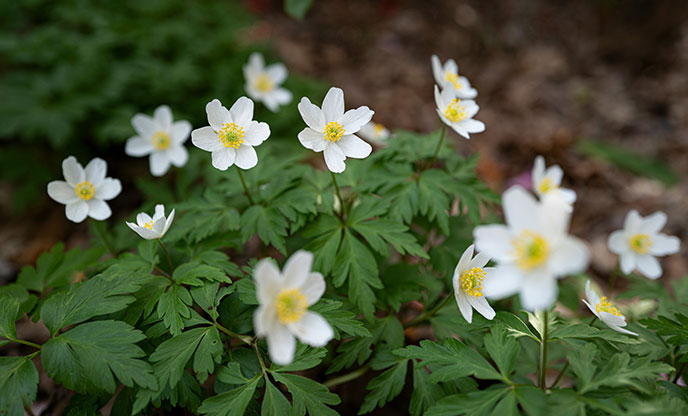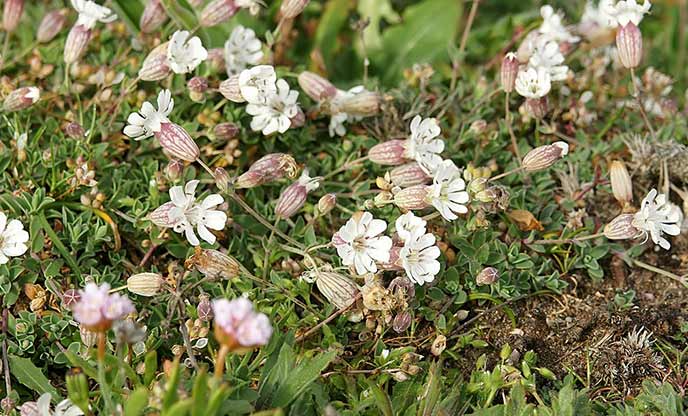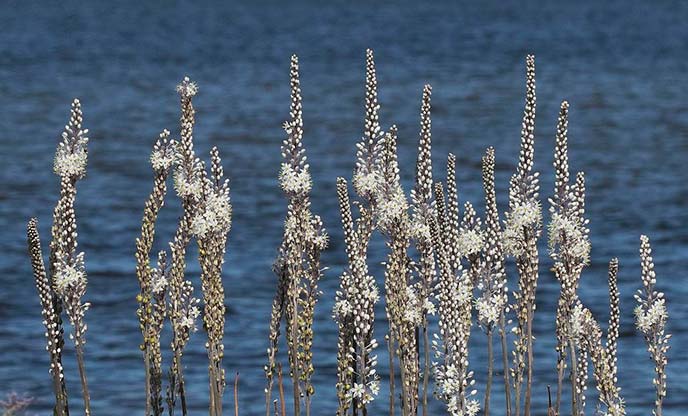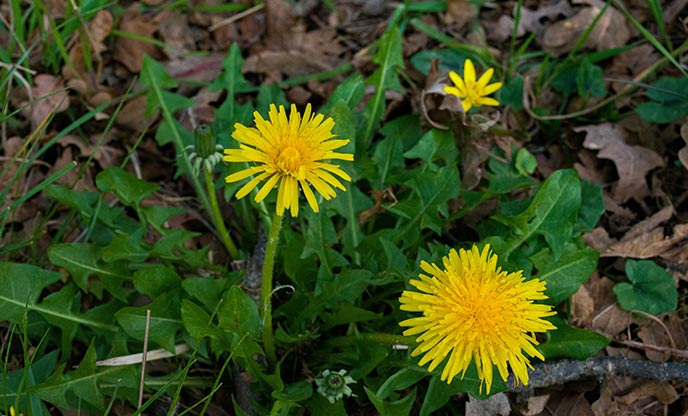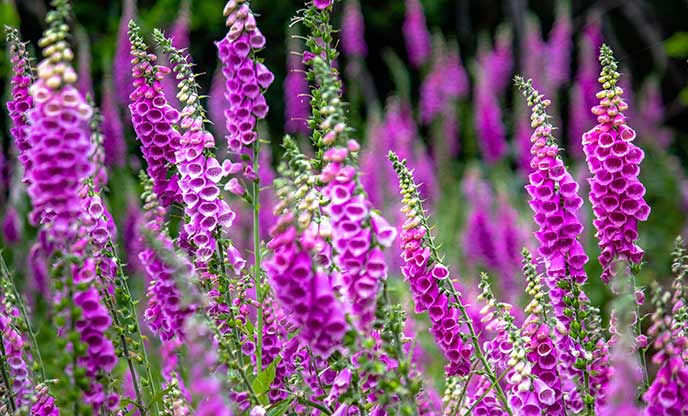Discover the UK's wildflowers
Penned on the 3rd May 2024

Have you ever paused to admire a flower in the wild and instantly felt your mood elevate? Nothing puts a spring in our step quite like the season’s first bloom. However, beyond mere decoration, wildflowers also perform a vital role in our ecosystems. They are an important food source for pollinators such as bees, butterflies and birds, making them essential for sustaining agriculture and food crops. Wildflower meadows also provide a habitat for a vast range of wildlife, including birds, bats, spiders, insects and small mammals.
This guide provides you with everything you need to know about UK wildflowers and how to get started with identification, including popular species of wildflowers and the best places to find them.
Top tips for identifying UK wildflowers
Identifying wildflowers can be a rewarding pursuit, but it requires patience and knowledge...
Do your research

There are some fantastic resources available which can help you identify your favourite blooms. Amongst the best are Collins Wild Flower Guide, which includes flowering plants, including trees, grasses, and ferns. We also love Clare O'Reilly and Francis Rose’s The Wild Flower Key, which includes amazing illustrations and a key to aid recognition. If you prefer to use apps, Picture This, Flora Incognita and iNaturalist are all good options.
Join a wildlife walk
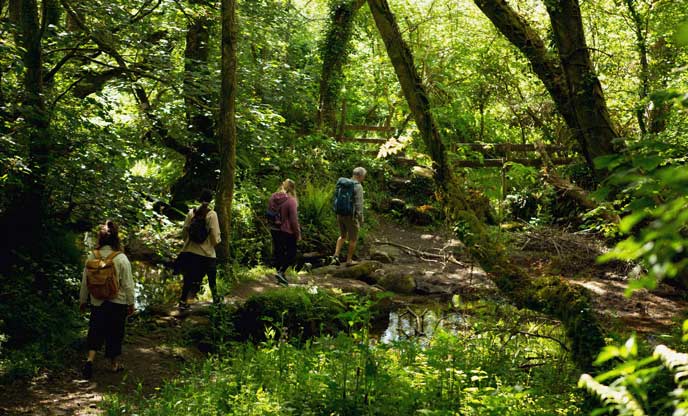
Joining local botanical groups or attending guided walks led by experts can also enhance your understanding of native flora. The Botanical Society of Britain & Ireland has groups all around the country. Alternatively, you may find local guided wildflower walks across the length and breadth of the UK.
Keep a flower journal

Like many plants, wildflowers take on different appearances throughout the year, depending on where they are in their lifecycle. For example, a plant that is flowering will look very different to one which is in its growth or seeding stage. To become a true expert in wildflower identification, sketching and observing your discoveries throughout the year can help you to learn more. Pay attention to key characteristics such as leaf shape, flower colour, and habitat, making notes in your journal as you go.
When to look for wildflowers in the UK
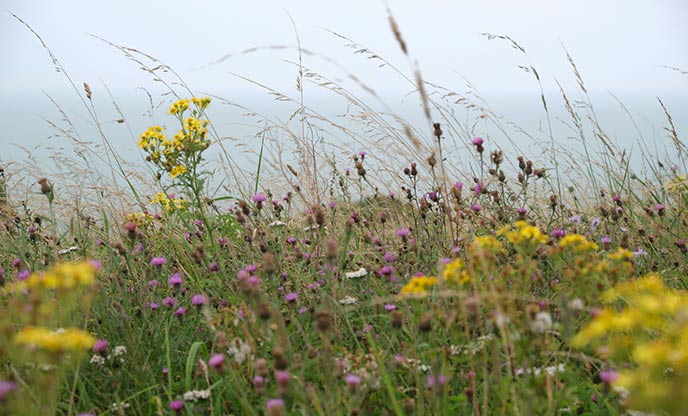
The best time to observe wildflowers varies depending on the species and location. The exact time may also vary depending on the climate of a particular year. However, UK wildflowers typically put on their displays from March to October, with the most varieties often visible in June and July. The spring is a great time to go on woodland walks in search of bluebells, primroses, and wood anemones. Coastal areas burst into colour in late spring and early summer, with sea thrift, sea campion, and yellow-horned poppy. Urban areas become speckled with daisies and dandelions in the summer months too.
How to protect UK wildflowers
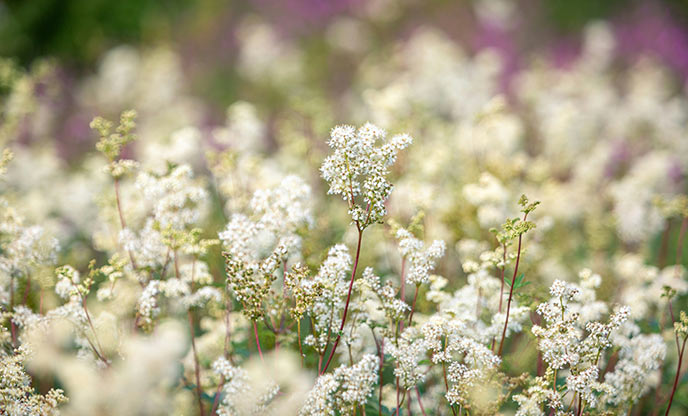
An estimated 97% of UK wildflower meadows have disappeared in the last 100 years. It is therefore important to protect UK wildflowers and to even consider growing some of your own. Resist the temptation to pick wildflowers, particularly if they are an endangered species, so they can continue to flourish and grow.
Which species of UK wildflowers are protected?
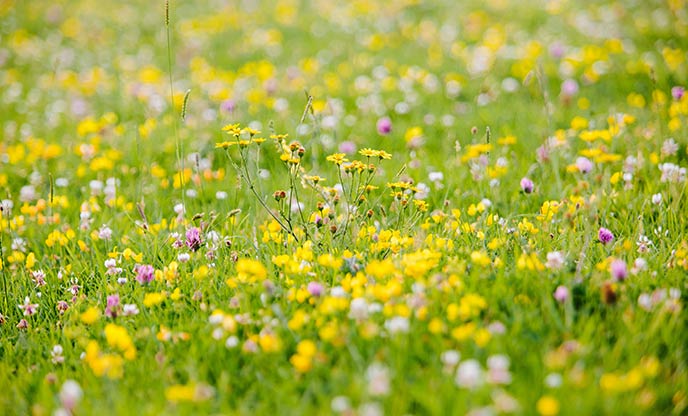
An estimated one in five of Britain's wildflower species is threatened with extinction, largely due to loss of habitat. Even some seemingly common species are considered under threat. The Wildlife and Countryside Act (1981) gives protection to native species, especially those deemed as being at high risk of disappearing. Amongst these species are bluebells, primroses, fen orchids, fen violets and many more.
Threats to UK wildflowers

Loss of habitat through farming and urbanisation is the leading threat to UK wildflowers. As wildflower numbers drop, so too do the numbers of insects who rely on the flowers for food and habitat. This in turn affects birds, hedgehogs, and bats who would usually feed on the insects. Other threats include climate change, invasive species of plants and pollution from traffic, industrial activities, agriculture, and urban runoff. Illegal harvesting of endangered flowers and trampling can also pose a significant risk.
Grow your own UK wildflowers

Growing your own wildflowers can contribute to the protection of UK wildflowers and pollinators. Not only does it create a habitat for many species of flora and fauna, but it also looks great. Garden flowers can be hugely beneficial for pollinators through habitat connectivity, meaning they have less distance to travel between different pollination locations. You can introduce wildflowers in a range of areas including your lawn, flowerbeds, window boxes and plant pots.
Popular species of UK wildflower
Looking for familiar species is a great way to start learning about UK wildflowers.
Woodland wildflowers
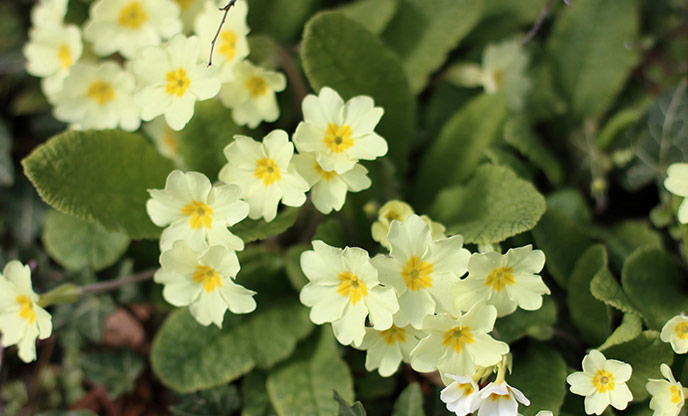
Primrose - Widespread across Britain and Ireland, primroses are amongst the first plants to flower in the UK. Keep an eye out for their pale-yellow petals on woodland walks, as they thrive in partial shade and damp, acidic soil.
Dog Violet - A favourite with butterflies and their larvae, the bright purple flowers of these violets can be spotted between April and June. Most often found on woodland floors, dog violets are unscented, unlike their relative fen violets.
Wood Anemone - A member of the buttercup family, wood anemones bloom from March to May. They can be found in ancient woodlands, as well as forests, hedgerows, and meadows. Their white, star-shaped petals sometimes come with a hint of pink.
Other popular species to look out for include bluebells, snowdrops, lily-of-the-valley and deadly nightshade.
Coastal flowers

Thrift - Best spotted on coastal cliffs, shingle beaches, sand dunes and salt marshes, sea thrift appears between April and July. Look out for clusters of pink flowers on long green stalks.
Sea Campion - Blooming between June and August, sea campion appears in rocky and sandy areas. They can be recognised by their calyx – a veiny tube – which sits beneath five white petals.
Sea Squill - Found on the western and northern coasts of Britain, sea squill thrives in coastal grassland. Their distinctive flowers are a blue-violet colour and are most definitely eye-catching.
You may also spot sea holly, sea aster, and sea binder around the UK’s coastal regions during the summer.
Urban flowers
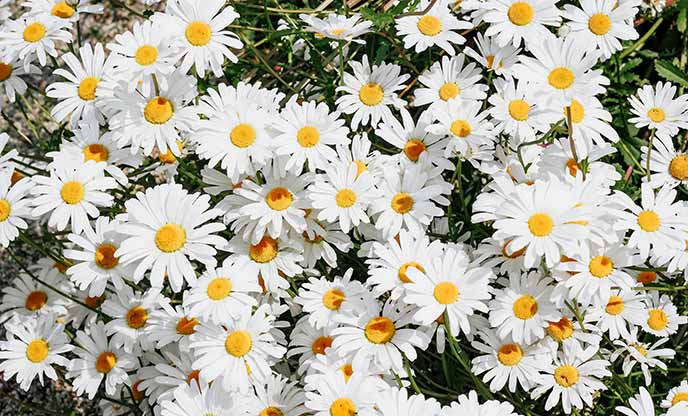
Common Daisy - Found all over Britain during spring and summer, you’ve most likely seen daisies in lawns and local parks. They are easily identified by their many white petals and bright yellow centre.
Dandelion - Thriving on lawns, roadsides, and shores of waterways, dandelions are recognised by the many layers of golden petals on their blooms, or their ‘clock’ seedheads. They are popular with foragers as all parts of the plant can be eaten.
Foxglove - Flowering between May and July, foxgloves often grow in gardens, roadsides, and hedgerows. Their tubular flowers come in bright shades of pink and purple, however take care not to touch them as they are poisonous.
The best places to see wildflowers in the UK
Wildflowers can be found in a variety of habitats, from farmers’ fields to local parks, and marshy pastures to rocky cliff faces. Here are some of the best places to look for wildflowers in the UK...
St Cyrus Nature Reserve, Aberdeen
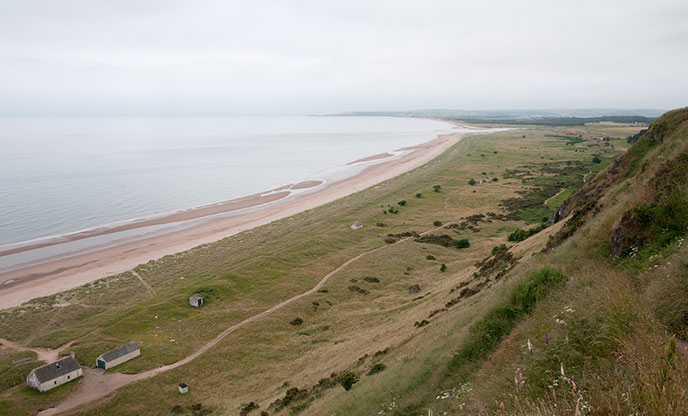
One of the most diverse nature reserves in Britain, in summer St Cyrus comes alive. The dramatic windswept cliffs and sand dunes protect the grasslands from the worst of the weather, where the wildflowers thrive. Scottish National Heritage has created several flower trails which are best enjoyed between April and October. Expect to see bellflowers, maiden pinks, spring vetch, forget-me-nots and native Scottish cattle grazing.
Yorkshire Dales, Yorkshire

The Yorkshire Dales’ hay meadows offer a stunning spectacle of wildflowers. Visit in June to see an abundance of species in full bloom, including ox-eye daisy, lady’s mantle, melancholy thistle and great burnet. Askrigg Bottoms Meadow is a Site of Special Scientific Interest and is home to one of the Yorkshire Dales’ best hay meadows. Another option is to walk through the Muker Meadows in Swaledale, which are easily accessed from public rights of way.
If you’re looking for somewhere to stay, this beautiful converted railway carriage in the Yorkshire Dales is a great base for wildflower walks.
Pembrokeshire Coast National Park, Wales

This spectacular coastal park encompasses a diverse range of habitats, including rugged cliffs, sandy beaches, woodlands, and heathlands, providing a haven for a wide variety of plant species. Skomer Island is famous for its carpets of bluebells, pink campion, sea campion, and thrift, which start to flower in the spring. Marloes Sands is a great place to spot coastal species such as sea holly, sea rocket, and yellow horned-poppy.
Take a look at our selection of Pembrokeshire hideaways to make the most of this magnificent stretch of coastline.
Exmoor National Park, Devon
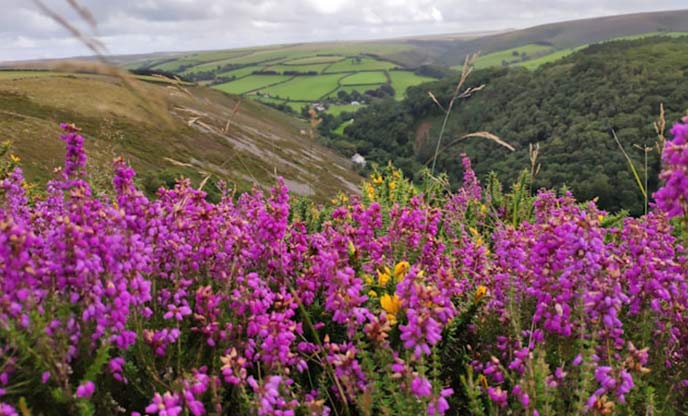
With its dramatic coastline, wooded valleys, and open moorland, Exmoor offers a diverse range of habitats for wildflowers. Explore the coastal cliffs and valleys to discover wildflowers such as sea campion, thrift, bell heather, foxgloves, and orchids. Wander across the moors to discover species such as gorse, bilberry, and bog asphodel.
Just a short drive from Exmoor National Park, this free-spirited farmstead is the perfect place to escape into nature for a few days,
South West Coast Path, Cornwall
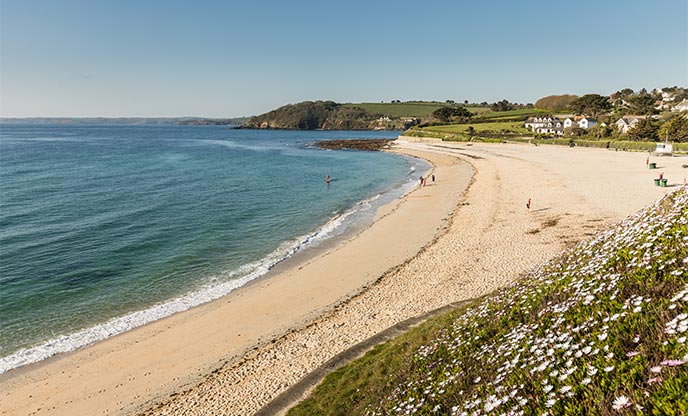
Whether you're strolling along clifftops, exploring secluded coves, or wandering through ancient woodlands, this coastal trail is home to plenty of botanical delights. Explore the fringes of the Helford River to discover wood anemones, primroses, bluebells, and wild garlic in spring. In summer, the north coast is covered in gorse, heather, thrift, foxgloves, and violets. You may also see wild thyme, campion, kidney vetch and the pink petals of Cornish heath.
This cosy cliffside cabin provides easy access to the South West Coast Path, as well as dreamy ocean views.
Ready to test your wildflower identification skills? Many of our nature-inspired hideaways have wildflower walks right on their doorstep.

